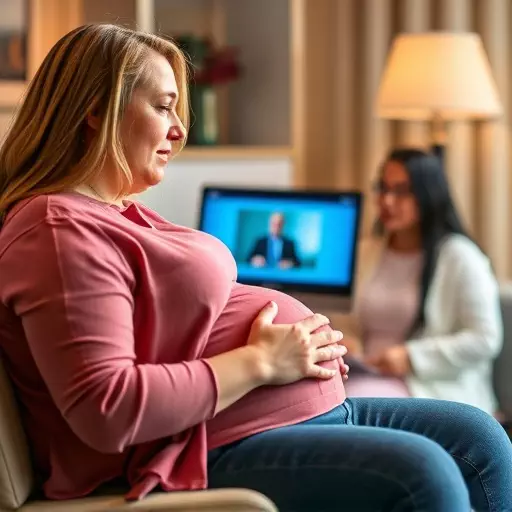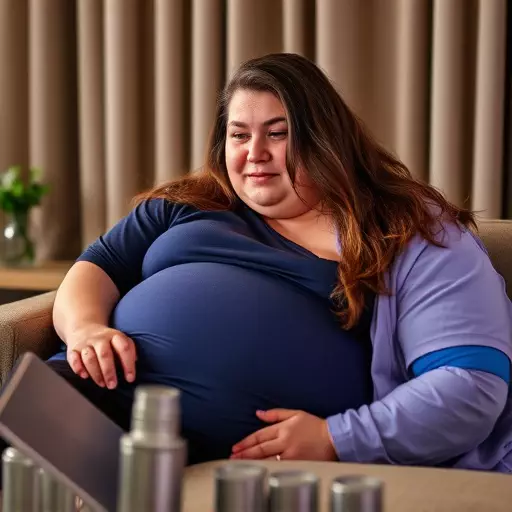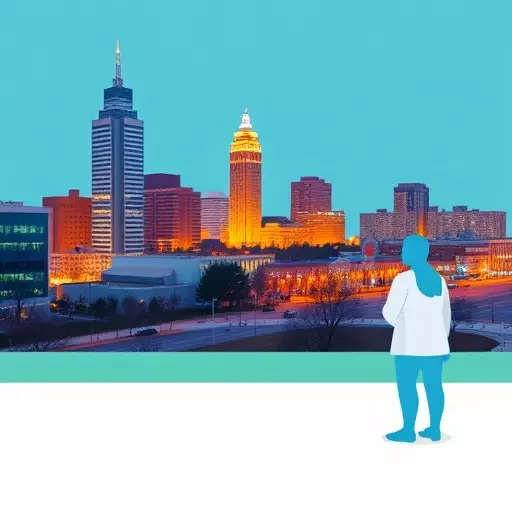Akron's telehealth obesity treatment programs integrate GLP-1 (glucagon-like peptide-1) therapies into advanced virtual obesity care platforms. These platforms enable remote monitoring and personalized guidance for patients, enhancing accessibility and continuous support in weight management. Key features include secure video conferencing, mobile apps, automated medication reminders, and data privacy measures. Patient selection focuses on motivated individuals with specific medical criteria who are willing to adhere to remote protocols. Combining GLP-1 therapy with virtual platforms shows promising results, combining convenience with specialized care for effective obesity management.
“In the realm of modern healthcare, remote obesity therapy management portals are revolutionizing weight loss care. This article explores Akron’s innovative approach using GLP-1 (glucagon-like peptide-1) therapy within telehealth obesity programs. We delve into the benefits of virtual platforms for personalized care, from comprehensive patient assessments to medication management.
Learn about designing effective remote therapy portals, selecting suitable patients, integrating GLP-1 treatments, and overcoming challenges. Discover success stories highlighting the real-life impact of these virtual obesity care platforms on transforming lives.”
- Understanding GLP-1 and its Role in Akron's Telehealth Obesity Programs
- Benefits of Virtual Platforms for Obesity Care: A Comprehensive Overview
- Designing Effective Remote Therapy Management Portals
- Patient Selection and Eligibility Criteria for Telehealth Obesity Treatment
- Integrating GLP-1 Therapy into Virtual Care Platforms
- Challenges and Solutions in Implementing Remote Obesity Management
- Success Stories: Real-Life Impact of Virtual Obesity Care Platforms
Understanding GLP-1 and its Role in Akron's Telehealth Obesity Programs

GLP-1, or glucagon-like peptide-1, is a hormone that plays a crucial role in regulating blood sugar levels and promoting feelings of satiety, making it a key target for obesity treatment. In Akron’s telehealth obesity treatment programs, GLP-1-based therapies are often integrated into virtual obesity care platforms to enhance weight management. These innovative virtual platforms allow healthcare professionals to remotely monitor patients’ progress, provide personalized guidance, and adjust treatment plans as needed.
By leveraging GLP-1’s ability to slow stomach emptying and reduce appetite, Akron’s telehealth programs offer a comprehensive approach to obesity management. The virtual nature of these platforms not only increases accessibility for patients but also facilitates continuous care, ensuring that individuals receive the support they need to achieve and maintain healthy weight loss goals.
Benefits of Virtual Platforms for Obesity Care: A Comprehensive Overview

The rise of remote obesity therapy management portals has revolutionized healthcare access and delivery for individuals dealing with weight-related issues. Virtual obesity care platforms offer a range of benefits, particularly in terms of convenience and accessibility. With telemedicine at the forefront, patients can receive specialized care from the comfort of their homes, eliminating geographical barriers commonly associated with traditional medical services. This is especially beneficial for those living in remote areas or facing mobility challenges.
These platforms often incorporate GLP-1 (glucagon-like peptide-1) therapies and other innovative treatments, ensuring personalized care plans tailored to individual needs. Telehealth obesity treatment programs allow healthcare professionals to monitor patients’ progress, provide dietary advice, and offer behavioral support virtually. This comprehensive approach not only enhances patient engagement but also promotes better adherence to treatment protocols, ultimately fostering more successful weight management outcomes.
Designing Effective Remote Therapy Management Portals

Designing effective remote therapy management portals for obesity treatment is a complex yet rewarding task. These virtual obesity care platforms must be user-friendly, offering intuitive interfaces that seamlessly guide patients through their GLP-1 in Akron (or any relevant treatment protocol) regimens. Telehealth obesity treatment programs thrive on robust features such as secure video conferencing for consultations, mobile apps for tracking diet and exercise, and automated reminders to take medications like GLP-1 injections.
Key considerations include ensuring data privacy and security, integrating with existing healthcare systems, and providing personalized, interactive content to engage patients. Effective platforms also facilitate open communication between patients and healthcare providers, enabling remote monitoring and adjustments to treatment plans as needed. This approach not only enhances accessibility but also promotes adherence, making telehealth obesity care a powerful tool in the global fight against this growing health concern.
Patient Selection and Eligibility Criteria for Telehealth Obesity Treatment

Patient selection is a critical aspect of successful telehealth obesity treatment programs, as it ensures that individuals receive tailored and effective care. Ideal candidates for virtual obesity care platforms are those motivated to make lifestyle changes and willing to engage in remote therapy sessions. This often includes adults with a Body Mass Index (BMI) greater than 30 or individuals with conditions like type 2 diabetes, hypertension, or hyperlipidemia that can be exacerbated by obesity.
Eligibility criteria may also consider factors such as access to technology, ability to participate in video conferences, and commitment to regular check-ins with healthcare providers. GLP-1 (glucagon-like peptide-1) therapy in Akron, for instance, could be offered as part of a comprehensive telehealth program, but patients must meet specific criteria related to their medical history, current medications, and willingness to adhere to treatment protocols remotely.
Integrating GLP-1 Therapy into Virtual Care Platforms

Integrating GLP-1 (Glucagon-Like Peptide-1) therapy into virtual care platforms offers a promising approach for managing obesity through telehealth. This innovative strategy leverages the benefits of both remote care and targeted hormonal treatments, creating more accessible and potentially effective obesity treatment programs. By incorporating GLP-1 in Akron, healthcare providers can offer patients a convenient way to receive specialized care without the need for frequent in-person visits.
Virtual obesity care platforms can streamline the process, enabling patients to monitor their health, receive personalized dietary and lifestyle guidance, and even get adjusted GLP-1 dosages remotely. This integrated approach not only enhances patient compliance but also leverages technology to foster a more engaged and proactive relationship between patients and their care teams. The use of GLP-1 in telehealth obesity treatment programs has shown promising results in clinical trials, suggesting that combining these advanced therapies with remote care could be a game-changer in the fight against obesity.
Challenges and Solutions in Implementing Remote Obesity Management

Implementing remote obesity management presents unique challenges, particularly when it comes to personalized care. One significant hurdle is providing effective treatment tailored to individual patient needs, especially considering the diverse nature of obesity-related health issues. Telehealth obesity treatment programs must overcome barriers like limited physical examinations and inadequate assessment of eating habits, which are crucial for accurate diagnoses and treatment planning. Virtual obesity care platforms can address these challenges by leveraging technology to enhance communication and data sharing between patients and healthcare providers.
For instance, integrating GLP-1 in Akron (Glucagon-like peptide-1) therapies into virtual care platforms offers a promising solution. These treatments require precise monitoring and adjustments, which telemedicine enables through regular virtual check-ins, remote monitoring devices, and digital tools for tracking food intake and physical activity. By combining these innovations, telehealth obesity management can provide comprehensive, personalized care at a distance, improving accessibility to effective treatment for a broader population.
Success Stories: Real-Life Impact of Virtual Obesity Care Platforms

In the realm of healthcare innovation, virtual obesity care platforms have emerged as a game-changer, transforming traditional weight management strategies. These digital tools offer GLP-1 in Akron, Ohio, and beyond, bringing specialized telehealth obesity treatment programs directly to patients’ homes. Success stories from around the globe highlight their profound impact on real lives. For instance, a study out of a major metropolitan area revealed that participants in a virtual obesity care program experienced significant weight loss, improved metabolic markers, and heightened patient satisfaction compared to those receiving standard care.
One such platform, tailored for remote management, enables healthcare providers to monitor patients’ progress, offer personalized dietary and exercise plans, and conduct regular video consultations. This approach has proven particularly beneficial for individuals with busy schedules or those in remote areas who lack access to specialized obesity clinics. By removing geographical barriers and providing convenient, personalized care, these virtual platforms are fostering positive changes in diet, physical activity, and overall well-being, paving the way for a healthier future.
